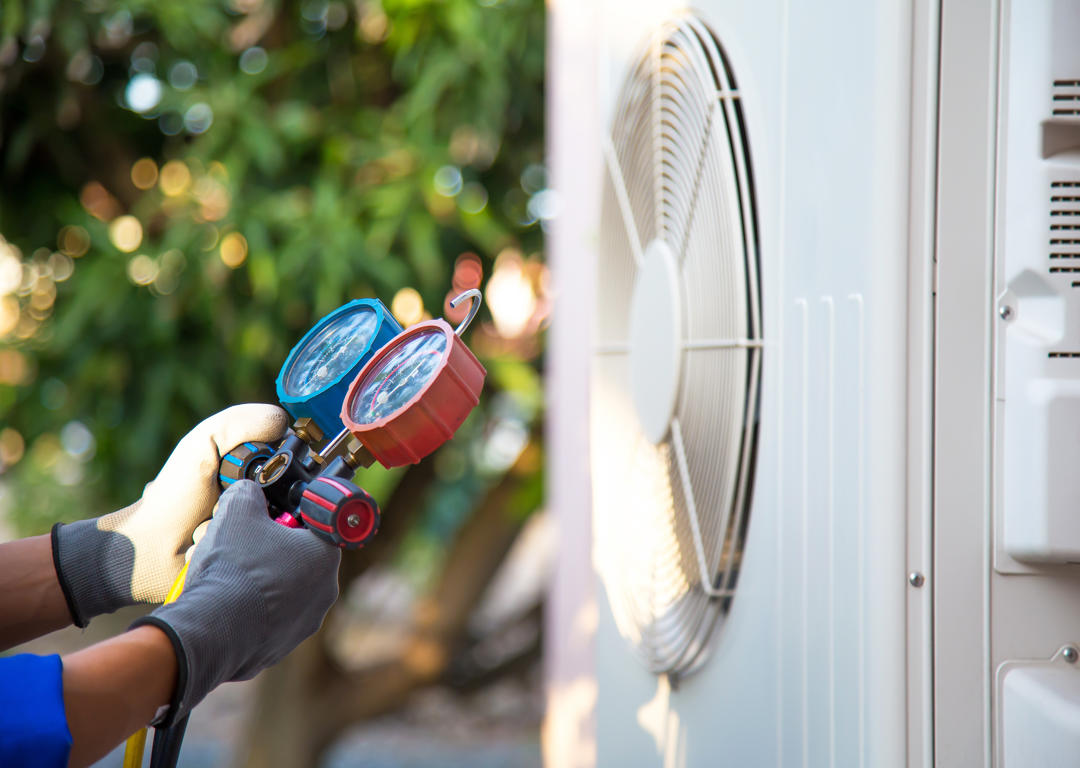Serving the Pikes Peak Region Since 1988
- Call Us For a Free Estimate!
Serving the Pikes Peak Region Since 1988

As the summer heat gives way to cooler autumn temperatures, it’s essential to prepare your HVAC system for the colder months ahead. In Colorado Springs, where winters can be particularly harsh, ensuring that your heating system is ready for fall and winter is crucial for maintaining comfort and energy efficiency. This article outlines the steps to get your HVAC system ready for the colder months.
The first and most crucial step in preparing your HVAC system for fall is to schedule a professional inspection and tune-up. A certified HVAC technician will thoroughly inspect your system, identifying and addressing any potential issues before they become major problems. During a professional tune-up, the technician will inspect and clean critical components such as the heat exchanger, blower motor, and burners to ensure they are free of dust and debris. They will verify that your thermostat is accurately calibrated to ensure optimal performance and energy efficiency. Additionally, all moving parts will be lubricated to reduce friction and wear, extending the lifespan of your system. Finally, the system controls will be checked and tested to ensure the heating system starts, operates, and shuts down correctly.
Regularly replacing or cleaning your air filters is one of the simplest yet most effective ways to maintain your HVAC system’s efficiency. Dirty filters can restrict airflow, causing your system to work harder and consume more energy. During the fall, it’s a good idea to check your filters every month and replace or clean them as needed, especially if you have pets or suffer from allergies. Consider using high-efficiency particulate air (HEPA) filters, which can trap smaller particles and improve indoor air quality.
Leaky or poorly insulated ducts can cause significant energy losses, making your heating system work harder to maintain a comfortable temperature. To inspect and seal ductwork, start with a visual inspection to check for visible signs of leaks, such as disconnected or loose ducts, and listen for unusual noises that may indicate air escaping. Use mastic sealant or metal tape to seal any leaks or gaps, avoiding standard duct tape as it is not durable enough for long-term use. Insulate any exposed ductwork in unconditioned spaces, such as attics or crawl spaces, to prevent heat loss.
Ensuring that your thermostat is functioning correctly is essential for maintaining a comfortable indoor environment. If you have a battery-operated thermostat, replace the batteries to prevent any disruptions during the heating season. Consider upgrading to a programmable or smart thermostat, which allows you to set temperature schedules and reduce energy consumption when you are not home. Set your thermostat to a comfortable temperature for when you are home and lower it by a few degrees when you are away or sleeping to save energy.
If your HVAC system includes an outdoor unit, it’s essential to ensure it is clean and free of debris. Remove any leaves, dirt, or other debris that may have accumulated around the unit during the summer to ensure proper airflow and prevent damage. Inspect the unit for any signs of damage or wear, such as bent fins or cracks in the housing. Consider using a breathable cover to protect the unit from debris and harsh weather during the fall and winter months, but make sure to remove the cover before using the air conditioner again in the spring.
The furnace is the heart of your heating system, so it’s essential to ensure it is in good working order before the colder months arrive. Check that the pilot light or electronic ignition is functioning correctly, as a weak or flickering pilot light can indicate a problem that needs professional attention. Inspect the burner flames to ensure they are blue and steady, as yellow or flickering flames can indicate a problem with combustion, such as a gas leak or a dirty burner. Test all safety switches and controls to ensure they are operating correctly, including the limit switch, which prevents the furnace from overheating.
Proper insulation and weatherstripping can significantly reduce heat loss, making your HVAC system more efficient. Ensure that your home is adequately insulated, especially in the attic, walls, and floors, to maintain a consistent indoor temperature and reduce the workload on your HVAC system. Check for drafts around windows and doors, and use weatherstripping or caulk to seal any gaps and prevent cold air from entering your home. Insulate any exposed pipes to prevent them from freezing and bursting during extreme cold weather.
Carbon monoxide (CO) is a colorless, odorless gas that can be deadly, so it’s crucial to ensure that your carbon monoxide detectors are working correctly, especially if you have a gas furnace. Press the test button on each detector to ensure it’s working and replace the batteries if needed. If you don’t already have carbon monoxide detectors, install them on each level of your home and near sleeping areas. Carbon monoxide detectors typically have a lifespan of 5 to 7 years, so replace any detectors that are past their expiration date.
Preparing your HVAC system for fall is essential for maintaining comfort and efficiency during the colder months in Colorado Springs. By scheduling a professional inspection, replacing air filters, inspecting ductwork, testing your thermostat, cleaning the outdoor unit, checking the furnace, improving insulation, and testing carbon monoxide detectors, you can ensure that your heating system is ready to keep you warm all winter long. Regular maintenance not only enhances the performance of your HVAC system but also extends its lifespan and saves you money on energy bills.